(50408 products available)


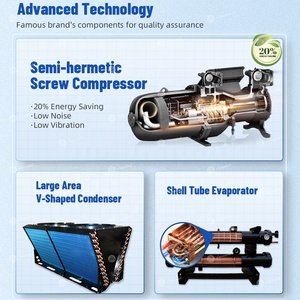




































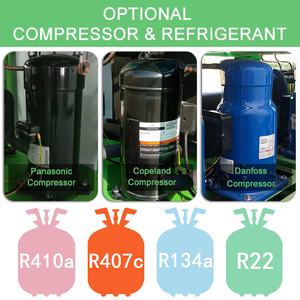





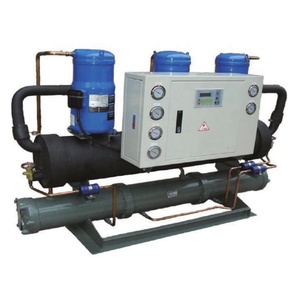









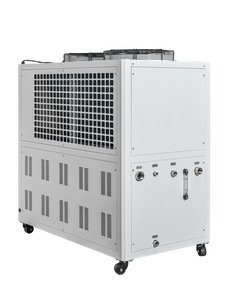





















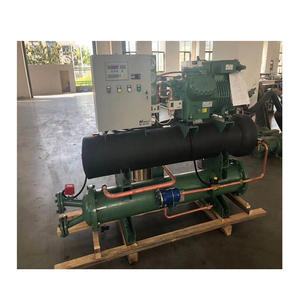
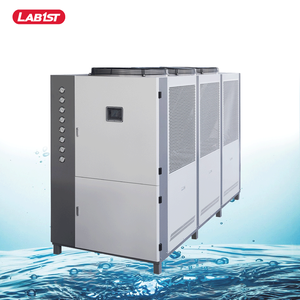















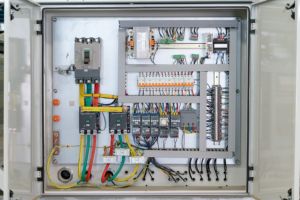






























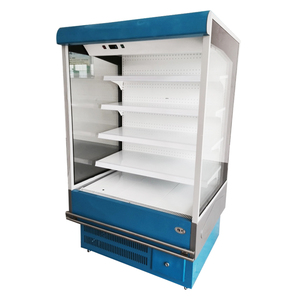




















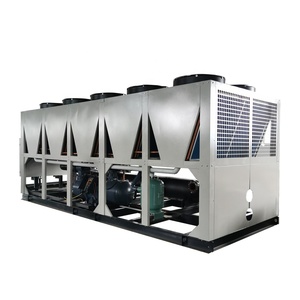






























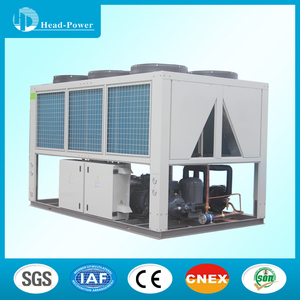










































Recirculating chiller:
A recirculating chiller is a cooling apparatus that employs a refrigeration cycle to lower the temperature of a circulating fluid. The chilled fluid is then utilized to remove heat from other processes or systems through heat exchangers, which typically are water-based systems. One distinct feature of the recirculating chiller is its capacity to function as a cooling system. It minimizes water consumption by re-circulating the coolant, so users can significantly cut costs on water bills.
Water-cooled chiller:
A water-cooled chiller is a refrigeration system that utilizes water as a coolant to absorb heat from a processed fluid and reject heat through water. In most cases, it employs a heat exchanger, in which the water takes some heat from the refrigerant to lower the temperature. Users can find two distinct heat exchangers within a water-cooled chiller, namely evaporator and condenser. The evaporator usually uses water to absorb heat from the chilled fluid, while the condenser transfers heat to the environment through water.
Air-cooled chiller:
An air-cooled chiller is a cooling device that uses air as a heat transfer medium to reject heat produced during the refrigeration cycle. Heat is rejected from the chiller to the surrounding air through heat exchangers, which are normally coils containing refrigerant gases. An air-cooled chiller will absorb heat from processed fluids and release heat into the atmosphere. The entire process occurs via evaporation and condensation of refrigerant gases.
Medium-sized chiller:
A medium-sized chiller refers to a cooling device with a standard capacity installed in various industrial and commercial applications to regulate temperatures. Typically, just like many other chillers, it works to remove heat from a specific location and release it to the environment. The process involves absorbing heat from the substance or space that needs cooling and rejecting the heat into the atmosphere.
Laser chiller:
As the name suggests, a laser chiller is a cooling system designed to cool laser equipment. Even though laser devices emit heat during operation, keeping the components at optimal temperatures is essential to ensure the performance and functionality of various laser systems. That's where a laser chiller is required. It helps reduce the operating temperature of the laser parts.
The functions and capabilities of a 380v chiller contribute to its diverse application industries. Here are some industries and processes that use three-phase voltage chillers:
Food and Beverages Industry
A 380v chiller is critical to food processing, storage, and distribution. It cools and preserves the quality of meat, dairy, and other perishable food items. Brewery, soft drink, and juice companies also depend on it for beverage processing and keeping products at the recommended temperature.
Pharmaceutical and Chemical Industry
Pharmaceutical companies use three-phase refrigerants to stabilize drugs and other pharma products. They also use them to maintain the temperature of chemicals, promote optimal reactions, and facilitate safe storage.
Medical Field
Hospitals and clinics depend on 380V chillers to power their medical devices and diagnostic equipment. Refrigerators and freezers that store specimens, vaccines, and medicines also rely on chillers to function properly and preserve the integrity of materials.
Construction Industry
Chillers with 380V are used for concrete curing and cooling during the mixing process. They help to improve the properties of concrete. In addition, they are used to regulate temperature and create a comfortable work environment at construction sites.
Plastics and Manufacturing Industry
380V chillers play a crucial role in injection molding and extrusion processes to ensure quality and precision in production lines. They help maintain consistent temperatures in molds and prevent overheating of equipment.
HVAC Systems
Three-phase voltage refrigerants are used in large central air conditioning systems. They help remove heat from air streams, cool buildings, improve comfort, and promote energy efficiency.
Laser Cutting Machines
Laser cutting machines rely on 380V chillers for optimal laser tube and internal component cooling. By maintaining the recommended temperature range, the chiller enhances the cutting precision and extends the lifespan of the machine.
Plastic Injection Molding Machines
Chillers are widely used in plastic injection molding processes. They regulate the temperature of injection molds and help cool down molded plastic products quickly to improve productivity and product quality.
Data Center
Data centers use 380V refrigeration equipment to maintain the recommended temperature range for IT equipment. The refrigerators ensure optimal performance, mitigate the risks of equipment failure, and enhance system reliability.
Car Wash
Car wash facilities can use 380V chillers to maintain the right temperature for car wash chemicals and solutions. The chillers can also be used to cool equipment and pumps to enhance their performance and extend their lifespan.
When selecting a three-phase refrigeration machine, it is important to consider the following aspects:
Cooling Capacity
According to the application scenario and cooling requirements, the required logic chillers' cooling capacity should be determined. Factors such as heat load, ambient temperature, and chilled media temperature should be considered.
Power Supply Compatibility
Ensure that the chiller's voltage and frequency match the three-phase power supply. This guarantees proper operation and avoids electrical incompatibility or potential hazards.
Design and Construction
Choose a chiller with a robust chassis and reliable components to ensure its long-term operation in industrial environments. Features such as anti-corrosion coatings, durable materials, and good sealing can enhance the chiller's reliability and lifespan.
Energy Efficiency
Select a chiller with high energy efficiency to reduce operating costs and energy consumption. Look for models with good EER (Energy Efficiency Ratio) or COP (Coefficient of Performance) ratings, as these indicate higher energy efficiency.
Noise Level
If noise is a concern, consider the chiller's noise level. Select models with lower noise levels to minimize the impact on the working environment.
Cooling Method
Whether to choose air cooling or water cooling depends on the application scenario, equipment, and environmental factors. Select the appropriate cooling method according to the heat dissipation condition and the availability of water resources.
Cost
When selecting a chiller, it is important to consider the initial investment cost as well as the long-term operating costs. Choose a model that offers a balance of performance, energy efficiency, and reasonable pricing to achieve cost-effectiveness.
Optional Features
Consider the additional features and options in the chiller, such as intelligent control, remote monitoring capability, etc. These facets may improve automation, efficiency, and convenience of operation.
Q1: What happens if the 380v chillers are overloaded?
A1: Overloading a chiller can lead to reduced performance, premature failure, increased energy consumption, higher operating costs, and even fines or legal issues.
Q2: How can one tell that the 380v chiller is failing?
A2: There are different signs of a failing chiller. They include increases in operating costs, abnormal noises, error codes or alarms on the control panel, ice buildup or excessive condensation, and inadequate cooling. One may also notice frequent on and offs of the compressor. If any of these signs are observed, it is important to carry out a chiller repair as soon as possible.
Q3: Can a damaged 380v chiller be repaired?
A3: Yes, in most cases a damaged chiller can be repaired. However, some damages may make the machine irreparable. A qualified technician can assess the condition of the chiller and provide the necessary repairs.